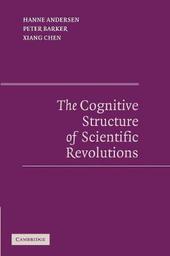
|
The Cognitive Structure of Scientific Revolutions
Paperback / softback
Main Details
| Title |
The Cognitive Structure of Scientific Revolutions
|
| Authors and Contributors |
By (author) Hanne Andersen
|
|
By (author) Peter Barker
|
|
By (author) Xiang Chen
|
| Physical Properties |
| Format:Paperback / softback | | Pages:220 | | Dimensions(mm): Height 229,Width 152 |
|
| Category/Genre | Philosophy of science
History of science |
|---|
| ISBN/Barcode |
9781107637238
|
| Classifications | Dewey:509.04 |
|---|
| Audience | | Professional & Vocational | |
|---|
|
Publishing Details |
| Publisher |
Cambridge University Press
|
| Imprint |
Cambridge University Press
|
| Publication Date |
26 September 2013 |
| Publication Country |
United Kingdom
|
Description
Thomas Kuhn's Structure of Scientific Revolutions became the most widely read book about science in the twentieth century. His terms 'paradigm' and 'scientific revolution' entered everyday speech, but they remain controversial. In the second half of the twentieth century, the new field of cognitive science combined empirical psychology, computer science, and neuroscience. In this book, the theories of concepts developed by cognitive scientists are used to evaluate and extend Kuhn's most influential ideas. Based on case studies of the Copernican revolution, the discovery of nuclear fission, and an elaboration of Kuhn's famous 'ducks and geese' example of concept learning, this volume, first published in 2006, offers accounts of the nature of normal and revolutionary science, the function of anomalies, and the nature of incommensurability.
Author Biography
Peter Barker is Professor of History of Science at the University of Oklahoma. Hanne Andersen is Professor of Medical Philosophy and Clinical Theory at the University of Copenhagen. Xiang Chen is Associate Professor of Philosophy at California Lutheran University.
Reviews'... the authors do offer powerful illustrations of why consideration of concepts and conceptual change must be an integral part of any convincing history of science, just as they urge against some competing views.' British Journal for the History of Science
|